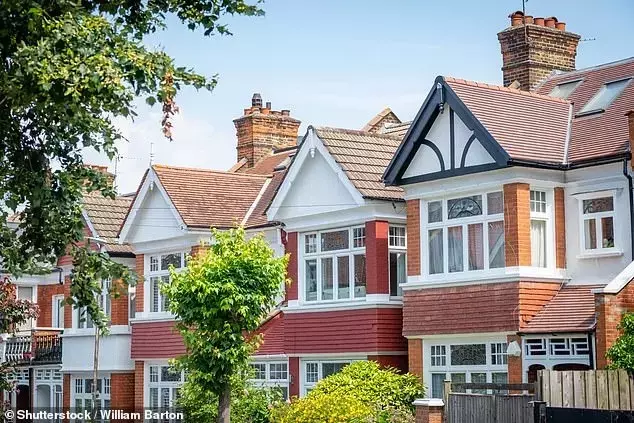
Property asking prices throughout Southern England have experienced a notable downturn over the past year, as reported by recent market analysis. This decline encompasses major regions such as London, the South East, the South West, and the East of England, where buyer confidence has waned significantly. Factors contributing to this trend include a sluggish economy, rising mortgage costs, and uncertainties surrounding potential property-related announcements in the forthcoming November Budget. With a decade-high inventory of homes available, the market has shifted in favor of buyers, compelling sellers to temper their price expectations to facilitate transactions amidst widespread hesitation.
The current slump in the southern English housing market marks a significant shift from the robust growth observed over the last two decades. In London, property values saw the steepest decline, falling by 1.4% over the year to October. Similarly, the South East experienced a 0.8% decrease, the South West a 1% drop, and the East of England a 0.6% reduction in asking prices. Rightmove's data, which tracks newly listed homes, indicates that many homeowners are forced to lower their prices when properties fail to sell quickly. This situation has created a buyer's market, allowing those willing to navigate the current uncertainties to negotiate more aggressively on price.
Several key elements are contributing to the Southern housing market's vulnerability. Firstly, an abundance of available housing stock, reaching its highest level in a decade, particularly in the southern regions, means that supply outstrips demand. Secondly, the cessation of the stamp duty holiday in April has made property purchases more expensive, especially in the South where home values are typically higher. This has placed additional financial strain on potential buyers. Thirdly, buyer affordability remains a significant challenge, as higher property prices in the South necessitate realistic pricing from sellers to attract cautious home movers.
Marc von Grundherr, a director at Benham and Reeves, a London-based estate agency, highlights the cautious stance of many buyers. Despite a general downward trend in mortgage rates since the Bank of England's base rate began to stabilize, stubbornly high inflation, currently at 3.8%, has delayed the anticipated pace of further rate cuts. This economic climate has put many prospective buyers in a 'holding pattern,' awaiting clearer indications of sustained affordability before committing to a purchase. Last year's market was invigorated by interest rate reductions, boosting confidence and activity; however, this year lacks similar momentum, leading to market stagnation.
Across the entire country, property asking prices registered a marginal 0.1% decrease year-on-year by October, primarily due to the significant declines in the southern regions. Month-on-month, however, there was a slight increase of 0.3%, bringing the average listing price to £371,422. Traditionally, October sees an 'autumn price bounce' of approximately 1.1% as the market recovers from the quieter summer months, with buyers often keen to settle into new homes before Christmas. This year, however, the large number of available properties has resulted in a much more subdued rebound. Nathan Emerson, chief executive of Propertymark, emphasizes that a cautious market, price sensitivity, and political uncertainty ahead of the Autumn Budget are shaping these trends. He notes that affordability issues, extensive property choice, and the impact of stamp duty adjustments are collectively affecting both buyer and seller confidence, especially in the South of England. Member agents are observing that only decisive and competitively priced transactions are achieving results.
Rumors regarding potential property tax changes in the upcoming Budget, to be announced by Chancellor Rachel Reeves, are undeniably causing prospective buyers to postpone their decisions, contributing to the stagnation of house prices. Speculation includes a possible overhaul of the stamp duty regime, potentially replacing it with a new property tax or allowing buyers to stagger payments over several years. Such uncertainties, coupled with a plateau in mortgage rates, are deterring buyers who had hoped for more advantageous borrowing terms. This reduced activity, combined with a record-high level of housing inventory, is causing prices to stagnate. Colleen Babcock, a property expert at Rightmove, explains that sellers aiming for a serious sale must recognize their limited pricing power and adjust their expectations accordingly. She also points out that the prospect of increased costs for higher-end properties, particularly in Southern England, due to potential Budget announcements, is prompting some movers to adopt a wait-and-see approach. While other regions of the country, such as the Northwest and Yorkshire and the Humber, have shown stronger growth (up to 1.9% year-on-year), the declines in the southern regions have pulled the national average into a negative trajectory. Mortgage rates are not expected to begin declining until late November, as lenders remain cautious, awaiting clarity on policy announcements. Matt Smith of Rightmove notes that average mortgage rates, especially for two-year fixed terms, are still lower than a year ago, and combined with flat house prices and improved lending criteria, many home-movers might find their affordability significantly better compared to last year, once the current uncertainty subsides.
